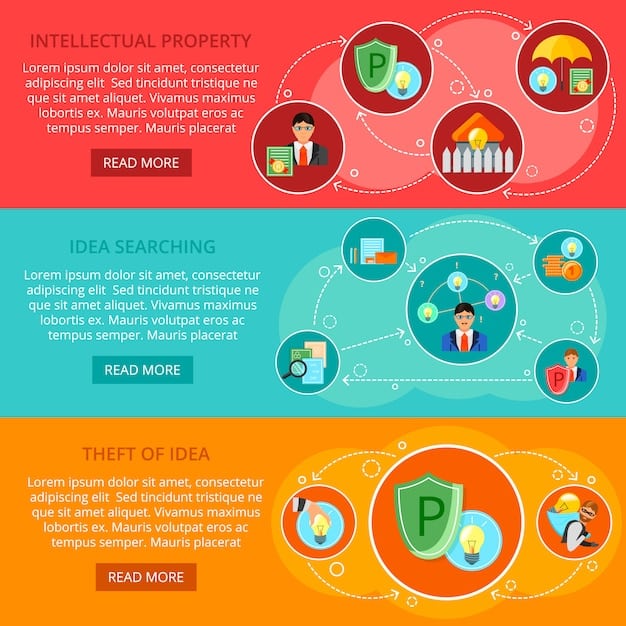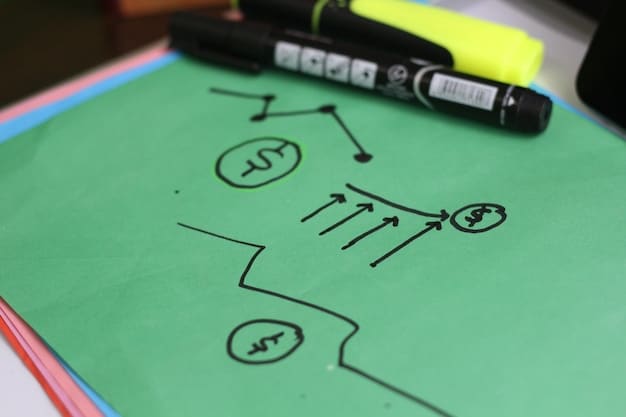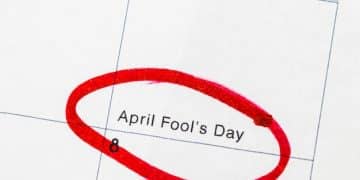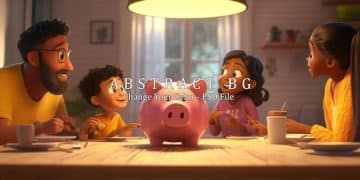Maximize Your US Federal Student Loan Forgiveness in 2025: The Ultimate Guide

Navigating US Federal Student Loan Forgiveness options in 2025 requires understanding available programs and eligibility, preparing necessary documentation, and staying informed about policy updates to potentially alleviate student loan debt.
Are you burdened by student loan debt and seeking relief? This ultimate guide to maximizing your US federal student loan forgiveness options in 2025 provides actionable strategies to navigate the complex landscape of forgiveness programs and potentially alleviate your financial burden.
Understanding US Federal Student Loan Forgiveness Programs
Understanding the intricacies of US Federal Student Loan Forgiveness programs is crucial for borrowers seeking financial relief. These programs offer pathways to have a portion or all of your federal student loan debt forgiven, but eligibility and application processes vary considerably.
The landscape of student loan forgiveness is dynamic, with changing regulations and eligibility requirements, making it essential to stay informed and proactive to navigate these options effectively.
Overview of Key Forgiveness Programs
Several key federal student loan forgiveness programs exist, each with its own set of criteria and benefits. Understanding these programs is the first step in determining your eligibility and exploring potential relief.
- Public Service Loan Forgiveness (PSLF): For those employed by government organizations or non-profits.
- Income-Driven Repayment (IDR) Forgiveness: Available through various IDR plans like SAVE, IBR, PAYE, and others after a specified repayment period.
- Teacher Loan Forgiveness: For qualified teachers who serve in low-income schools.
Eligibility Requirements for Each Program
Each program has strict eligibility rules. PSLF requires 120 qualifying monthly payments while working full-time for a qualifying employer. IDR forgiveness is tied to income and family size, and requires enrollment in a qualifying plan. Meeting these requirements is vital for approval.

In summary, the first step in navigating US Federal Student Loan Forgiveness is understanding the landscape, eligibility requirements and the available options.
Preparing Your Application for Loan Forgiveness
Preparing a comprehensive and accurate application is vital for increasing your chances of receiving student loan forgiveness. This involves gathering necessary documents, understanding the application process, and avoiding common errors that could lead to rejection.
A well-prepared application can significantly streamline the review process and ensure that your eligibility is accurately assessed. Paying attention to detail and adhering to all instructions is crucial.
Gathering Necessary Documentation
The documentation required for loan forgiveness applications can vary depending on the program. Essential documents generally include:
- Proof of Employment: Employment certification forms for PSLF.
- Income Verification: Tax returns and income statements for IDR plans.
- Loan Information: Documentation showing the type and amount of loans.
Step-by-Step Guide to the Application Process
The application process usually involves completing an online application, providing supporting documents, and submitting it to your loan servicer or the Department of Education. Following each step carefully ensures a smooth submission.
Common Mistakes to Avoid
Avoid common mistakes such as:
- Incomplete Forms: Make sure all sections are filled out accurately.
- Missing Documents: Include all required documents.
- Incorrect Information: Verify the accuracy of all data provided.
Inconsistencies or omissions can cause delays or rejection. Double-checking your application before submission is crucial for a favorable outcome.
Maximizing Benefits Under Income-Driven Repayment (IDR) Plans
Income-Driven Repayment (IDR) plans offer a potential pathway to loan forgiveness by capping monthly payments based on income and family size. Understanding how to maximize benefits under IDR plans is essential for borrowers pursuing this option.
These plans can offer significant financial relief by making monthly payments more manageable while working towards eventual loan forgiveness after a specified repayment period.

Understanding Different IDR Plans
Several IDR plans are available, including SAVE (Saving on a Valuable Education), IBR (Income-Based Repayment), PAYE (Pay As You Earn), and others. Each has distinct formulas for calculating monthly payments and forgiveness timelines.
How Income and Family Size Affect Payments
Monthly payments under IDR plans are directly tied to your income and family size. Lower income and larger families result in lower monthly payments, increasing the potential for loan forgiveness after the repayment period.
Strategies for Lowering Your Monthly Payments
To lower your monthly payments, consider:
- Adjusting Tax Withholdings: Lowering your taxable income can reduce payments.
- Accurate Family Size: Ensuring your family size is accurately reported.
Monitoring and adjusting your repayment strategy based on changes in income or family size can optimize your path to loan forgiveness under IDR plans.
Public Service Loan Forgiveness (PSLF): A Detailed Look
The Public Service Loan Forgiveness (PSLF) program offers loan forgiveness to borrowers employed by government organizations or qualifying non-profits. A detailed understanding of PSLF is vital for those pursuing this specific path to forgiveness.
PSLF provides a potentially faster route to loan forgiveness compared to IDR plans, but requires strict adherence to eligibility criteria and employment requirements.
Qualifying Employment and Loan Types
To qualify for PSLF, you must be employed full-time by a qualifying employer, such as a government organization (federal, state, local, or tribal) or a non-profit organization that is tax-exempt under Section 501(c)(3) of the Internal Revenue Code. Certain other types of non-profits may also qualify. Additionally, only federal Direct Loans are eligible for PSLF.
Making 120 Qualifying Payments
The core requirement of PSLF is making 120 qualifying monthly payments while working full-time for a qualifying employer. These payments must be made under a qualifying repayment plan, typically an Income-Driven Repayment (IDR) plan.
The Importance of Employment Certification Forms
Submitting Employment Certification Forms (ECFs) annually or whenever you change employers is crucial for tracking your progress towards PSLF. These forms verify your qualifying employment and ensure that your payments are correctly counted.
In summary, PSLF is a program that requires specific conditions, careful planning, and meticulous adherence to the requirements in order to take full advantage of it.
Navigating Potential Changes in Loan Forgiveness Policies
Loan forgiveness policies are subject to change based on legislative and regulatory actions. Staying informed about potential changes is crucial for borrowers seeking to maximize their forgiveness options.
Policy updates can impact eligibility criteria, program benefits, and application processes. Adaptability and proactive monitoring are essential for navigating the evolving landscape.
Staying Informed About Legislative Updates
Keep track of legislative developments through:
- Official Government Websites: Regularly check the Department of Education’s website.
- Professional Associations: Follow updates from organizations focused on student aid.
Adapting to Changes in Eligibility Criteria
If eligibility rules change, reassess your situation and adjust your strategy accordingly.
Developing a Flexible Repayment Strategy
A flexible repayment strategy allows you to adapt to policy changes and adjust your approach to maximize your forgiveness options. Diversifying your approach can mitigate the risks associated with policy uncertainty.
In conclusion, monitoring and adapting to potential changes in loan forgiveness policies are essential components of a successful strategy to achieve student loan relief.
Refinancing vs. Loan Forgiveness: Which Is Right for You?
When managing student loan debt, borrowers often consider both refinancing and loan forgiveness as potential strategies. Understanding the differences between these options and determining which is right for your situation is essential.
Refinancing involves replacing existing loans with a new loan, often at a lower interest rate, while loan forgiveness programs offer the possibility of having a portion or all of your debt discharged.
Understanding the Pros and Cons of Refinancing
Refinancing can lower your monthly payments and reduce the total interest paid over the life of the loan. However, refinancing federal loans into private loans can disqualify you from federal loan forgiveness programs.
Evaluating the Benefits of Loan Forgiveness Programs
Loan forgiveness programs, such as PSLF and IDR forgiveness, offer the potential for significant debt relief. However, these programs often have strict eligibility requirements and may take many years to achieve forgiveness.
Making the Right Decision for Your Financial Situation
The decision to refinance or pursue loan forgiveness depends on several factors, including your employment situation, income, risk tolerance, and long-term financial goals. Assessing these factors will help you determine the appropriate path for your situation.
| Key Point | Brief Description |
|---|---|
| 🔑 Program Eligibility | Understand criteria for PSLF, IDR plans, and Teacher Loan Forgiveness. |
| 📝 Application Prep | Gather necessary documents and avoid common application mistakes. |
| 💰 IDR Optimization | Lower payments by adjusting income and family size. |
| 🔄 Policy Monitoring | Stay informed about legislative and regulatory changes. |
Frequently Asked Questions (FAQ)
▼
The PSLF program forgives the remaining balance on your Direct Loans after you have made 120 qualifying monthly payments while working full-time for a qualifying employer.
▼
IDR plans are designed to make your student loan debt more manageable by basing your monthly payment on your income and family size. Several IDR options are available.
▼
The application process varies depending on the specific program. Generally, it involves completing an application form and submitting any required documentation to your loan servicer.
▼
Federal loan forgiveness programs only apply to federal student loans. Private student loans are not eligible for these programs. Consider refinancing options for private loans.
▼
Stay informed by regularly checking the Department of Education’s website, following updates from professional associations, and consulting with financial advisors or student loan experts.
Conclusion
Navigating the complexities of US Federal Student Loan Forgiveness in 2025 requires careful planning, thorough preparation, and ongoing monitoring. By understanding eligibility requirements, exploring available programs, and staying informed about policy changes, you can maximize your chances of achieving student loan relief and securing your financial future.





